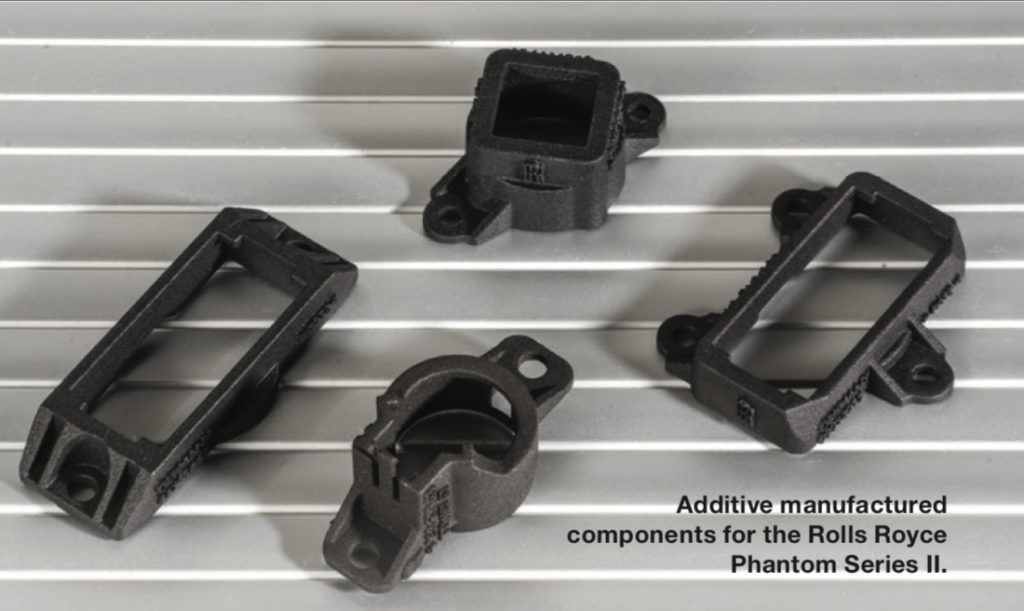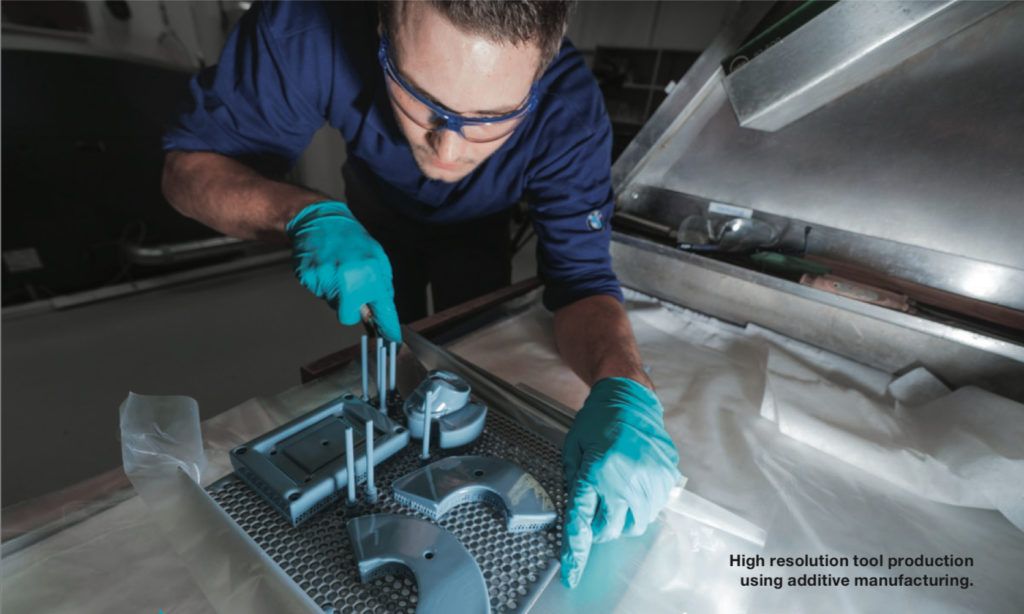BMW Bets on 3D Printing your Next Sports Car

Additive Manufacturing (i.e., 3D printing) has been around for 30 years, why is it such a hot topic nowadays? BMW is eager to capitalize on recent technological advances to be the front runner in automotive additive manufacturing, but how will it mitigate the intellectual property risk of having digital 3D files of its highly-engineered parts?
Additive manufacturing and its economic uses
Additive manufacturing (also called 3D printing) was developed in the 1980s, but only recently it has captured the attention of managers and broader society [1]. In layman terms, additive manufacturing consists of printing layers of metals/polymers, instead of molding and cutting away material [2].
In its infancy, 3D printing was extremely costly, and used mostly in low cost-sensitive applications with little regard to reliability. However, as patents expired, startups fueled by venture capital entered the market, creating technologies that are faster, more capable, and affordable than ever [3]. With those technological breakthroughs, additive manufacturing’s economic uses have been broadened to include:
- Highly engineered and customized products – e.g., GE’s new turboprop engine uses 3D printing to consolidate 855 individual parts into 12 components, shaving off over 100 pounds in weight, improving fuel efficiency by 20 percent, and adding 10 percent more power [4]
- Low-volume products with high setup production costs – e.g., spare parts for vintage cars, such as Porsche 959, are extremely scarce due to the low number of vehicles produced (292 in total). Prior to additive manufacturing, every time a part was needed, Porsche would have to stop production, pull out old molds and produce a small batch to serve future needs, at a very high cost. 3D printing enables the car manufacturer to reduce the high setup and inventory costs associated with traditional processes [5].
BMW as a first-mover in additive manufacturing in the auto industry
As BMW Group navigates how to extract value from additive manufacturing across its brands, management has already shown the ability to incorporate 3D printing into series production, a major milestone for any auto company [6].
With its flagship electric car BMW i8 Roadster, BMW became the first auto manufacturer to use additive manufacturing for a production run of several thousand metal parts, producing a convertible cover that is both lighter and more rigid than traditional molding technology would be able to produce [7]. BMW Group also incorporated 3D printing to its higher-end brand, Rolls-Royce, proving that the technology is able to produce complex designs without compromising on quality; the Rolls-Royce Phantom Series II has been assembled with the aid of additive manufacturing since 2012 [8].
Source: “BMW Group Plans Additive Manufacturing Campus: Technological Expertise in Industrial-Scale 3D Printing to be Consolidated at New Location.” 2018.M2 Presswire, Apr 16. http://search.proquest.com.ezp-prod1.hul.harvard.edu/docview/2025323053?accountid=11311.
In April of 2018, BMW announced it is to invest over 10 million euros in a new Additive Manufacturing Campus, located just north of its headquarters in Munich. The move will concentrate the Group’s printing expertise in one center that will accommodate up to 80 employees. The team will evaluate new use cases for additive manufacturing, and develop them to “series maturity” [9].
Furthermore, BMW’s venture capital arm, called BMW iVentures, has been investing heavily in 3D printing startups, such as Carbon, Desktop Metal, and Xometry. Those investments (all in the past 3 years) will offer the company access to new technologies that have the potential to completely transform the way additive manufacturing is used in mass production [10].
Untapped opportunities
Although BMW has shown promise in using additive manufacturing to date, it should not rest on its laurels; the organization is yet to capitalize on opportunities offered by 3D printing across its supply chain. According to DHL, excess and rarely used stock can add up to more than 20 percent of total inventory [11]. That issue is particularly prevalent in the auto industry, in which spare parts are kept in multiple locations across the world (from dealerships to OEM’s warehouses) in case a customer needs it.
The auto spare parts issue up to today has been a trade-off between service level and cost; the higher the required service level, the higher is the cost incurred by the company to serve its customers. For instance, BMW might choose to keep rare parts of its most luxurious cars in almost every dealership to ensure serving their high-end customers in less than a day, in case of a malfunction. That service level come at steep costs to the company and its supply chain, tying cash to slow-moving inventory.
BMW should invest in developing additive manufacturing capabilities across its supply chain to reduce slow-moving inventory of spare parts. The company should develop 3D files of those rare parts and set up 3D printers in its highest selling dealership in each region; that would allow the company to serve its customers in 1-2 days, and drastically reduce inventory costs.
Source: “BMW Group Plans Additive Manufacturing Campus: Technological Expertise in Industrial-Scale 3D Printing to be Consolidated at New Location.” 2018.M2 Presswire, Apr 16. http://search.proquest.com.ezp-prod1.hul.harvard.edu/docview/2025323053?accountid=11311.
Concerns about the future of additive manufacturing
While it is clear that additive manufacturing has shown potential to create value in the auto industry, a few questions remain unanswered. First, how to mitigate the intellectual property risk of having digital 3D files of parts that cost thousands (if not millions) to be developed? Second, how to re-train the workforce in a world where additive manufacturing represents 5-10% of the production processes?
(798 words)
[1] Bonnín-Roca, Jaime, Parth Vaishnav, Joana Mendonça, and Granger Morgan. 2017. “Getting Past the Hype about 3-D Printing.” MIT Sloan Management Review 58 (3) (Spring): 57-62. http://search.proquest.com.ezp-prod1.hul.harvard.edu/docview/1885885282?accountid=11311.
[2] Pooler, Michael. “3D Printing Starts to Gain Traction in Industrial Tool Kits.” Financial Times. April 23, 2017. Accessed November 12, 2018. https://www.ft.com/content/3d009438-26a5-11e7-8691-d5f7e0cd0a16.
[3] Brown, Alan S. 2018. “Chain Reaction: Why Additive Manufacturing Is about to Transform the Supply Chain.” Mechanical Engineering 140 (10): 30–35. http://ezp-prod1.hul.harvard.edu/login?url=http://search.ebscohost.com/login.aspx?direct=true&db=bth&AN=132029167&site=ehost-live&scope=site.
[4] Ibid.
[5] Ibid.
[6] Richardson, Ed. 2017. “BMW Group Refines Additive Manufacturing on Premium Rolls-Royce Brand.” Automotive Industries 196 (3) (09): 32-32,34. http://search.proquest.com.ezp-prod1.hul.harvard.edu/docview/1938049293?accountid=11311.
[7] Ibid.
[8] Ibid.
[9] “BMW Group Plans Additive Manufacturing Campus: Technological Expertise in Industrial-Scale 3D Printing to be Consolidated at New Location.” 2018.M2 Presswire, Apr 16. http://search.proquest.com.ezp-prod1.hul.harvard.edu/docview/2025323053?accountid=11311.
[10] Ibid.
[11] Brown, Alan S. 2018. “Chain Reaction: Why Additive Manufacturing Is about to Transform the Supply Chain.” Mechanical Engineering 140 (10): 30–35. http://ezp-prod1.hul.harvard.edu/login?url=http://search.ebscohost.com/login.aspx?direct=true&db=bth&AN=132029167&site=ehost-live&scope=site.





I enjoyed reading this piece. Would appreciate additional perspective from the author on a few questions listed below:
1. The author mentions venture capital investment by BMW in additive manufacturing start-ups. How does the author imagine BMW will leverage the potential success of these firms to improve internal capabilities and production?
2. It seems that additive manufacturing offers potential for automobile customization. Does the author have any insight into such potential applications of this technology?
3. How does the author anticipate that 3-printing will affect the market dynamics in the vintage automobile industry? I wonder if increased access to spare parts would result in price increases, as maintenance may pose less of a barrier to purchase.
Very interesting read! I agree that BMW’s use of 3-D printing technology endows the company with the capability to better manage inventory, satisfy customer demands more quickly, and increase customization at least at a small scale for the time being.
I do question whether providing 3-D printers to the company’s highest selling dealerships makes economic sense. Most high-selling dealerships have a wide range of vehicles available for sale and high volumes, which means many different series of parts that will move quickly. In this case, given the high cost of 3-D printing and it being better suited to lower volumes, would it not be better to locate 3-D printers in dealerships with low inventory turnover but high rare parts and customer service requirements (e.g. flagship dealerships in Paris, New York, Toronto, Monaco, etc…)?
In terms of the risks of intellectual property, 3-D files can be encrypted to protect against trade secrets being stolen [1], so I do not consider this to be a major risk associated with rolling out 3-D printing on a broader scale, in particular as it relates to obscure or rare spare parts.
[1] Secured 3D Company Website, http://secured3d.com/, accessed November 2018.
I do share the view that a major risk of additive manufacturing is the intellectual property risk of files, but so is the case with closely guarded secrets such as the recipe of Coca Cola, KFC and several others. For decades, this intellectual property is protected using stringent governance mechanisms and controls. On the second concern, all advancements in our generations, computers, robotics, open innovation, machine learning bring in large risks of manual worker displacement, additive manufacturing/ 3d printing is no different and will result in replacement of some manufacturing jobs. These workers will have to be retrained and redeployed for other growth projects.
I was pleasantly surprised that BMW has already incorporated additive manufacturing into production process. I was under the impression that 3D printing technology is currently at an experimentation state rather than ready for high-scale production application. I also liked the fact that one of the two current production applications of 3D printing is BMW i8 – the most innovative and cutting-edge models in BMW’s lineup.
The idea about using 3D printers in dealerships to print a needed part in a just-in-time fashion rather than holding an inventory is appealing. However, I would like to do a deeper cost analysis. It’s not immediately obvious that deploying and maintaining complex industrial-grade 3D printers as well as keeping highly-qualified staff in dealerships would actually be cheaper than just keeping an inventory of parts.
I also agree with the intellectual property concerns. Having people downloading and printing parts without paying a cent to BMW would be a nightmare for the company. However, I think there are ways to address that. BMW could use some type of electronic chip labeling and tracking the parts, possibly based on blockchain technology.
Really great read about BMW’s use of 3D printing. I had no idea that they had incorporated this into their supply chain already! I don’t know that providing 3D printers to dealerships across the country would have major impact on service levels. Rather, it seems to transfer the cost of post-sale service from the dealership to the company itself. Like other commenters, I worry about the potential challenges of maintaining the intellectual property. The more dealerships able to download and print these parts, the more opportunities for theft of intellectual property.
Awesome read – thanks so much for sharing your perspective. You shared some interesting use-cases for 3D printing – specifically, GE’s turboprop engine and Porsche’s rare spare parts. The framework that you presented (highly engineered & low volume+high cost) was really helpful in understanding how to most effectively apply 3D printing. Given the framework you presented, I question whether it makes sense to add 3D printers in dealerships in order to speed up the lead time on spare parts. I think it would greatly depend on the demand of these rare spare parts to justify the cost of installing these 3D printers and train the team on how to use it. I would assume that the demand for spare parts is infrequent, and as a result would recommend adding 3D printers to BMWs distribution centers where they could ship the small parts on an as-needed basis instead (and produce just in time). It would be interesting to see a cost analysis as a follow up to this research to better understand the most effective way to implement this 3D printing within their business.